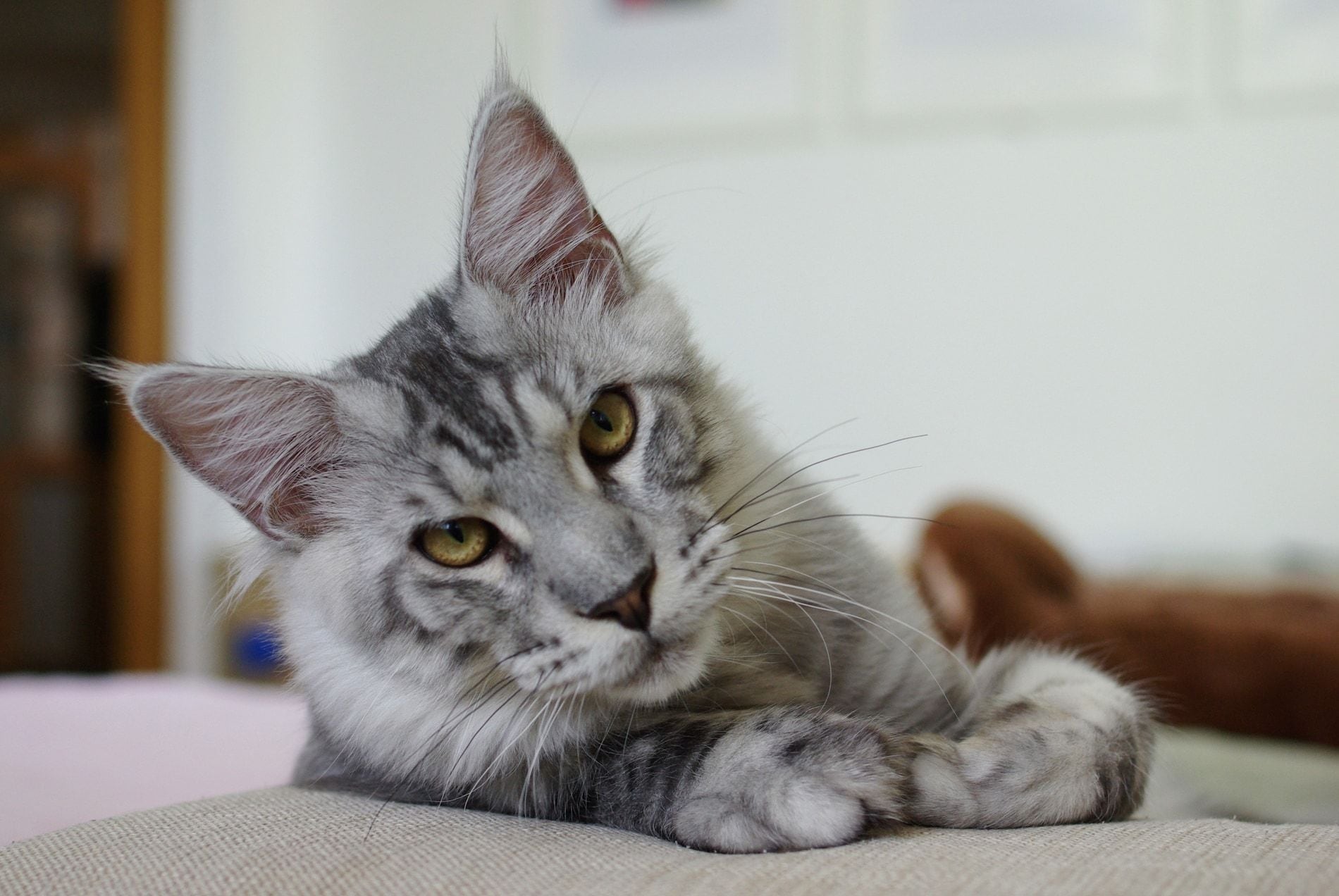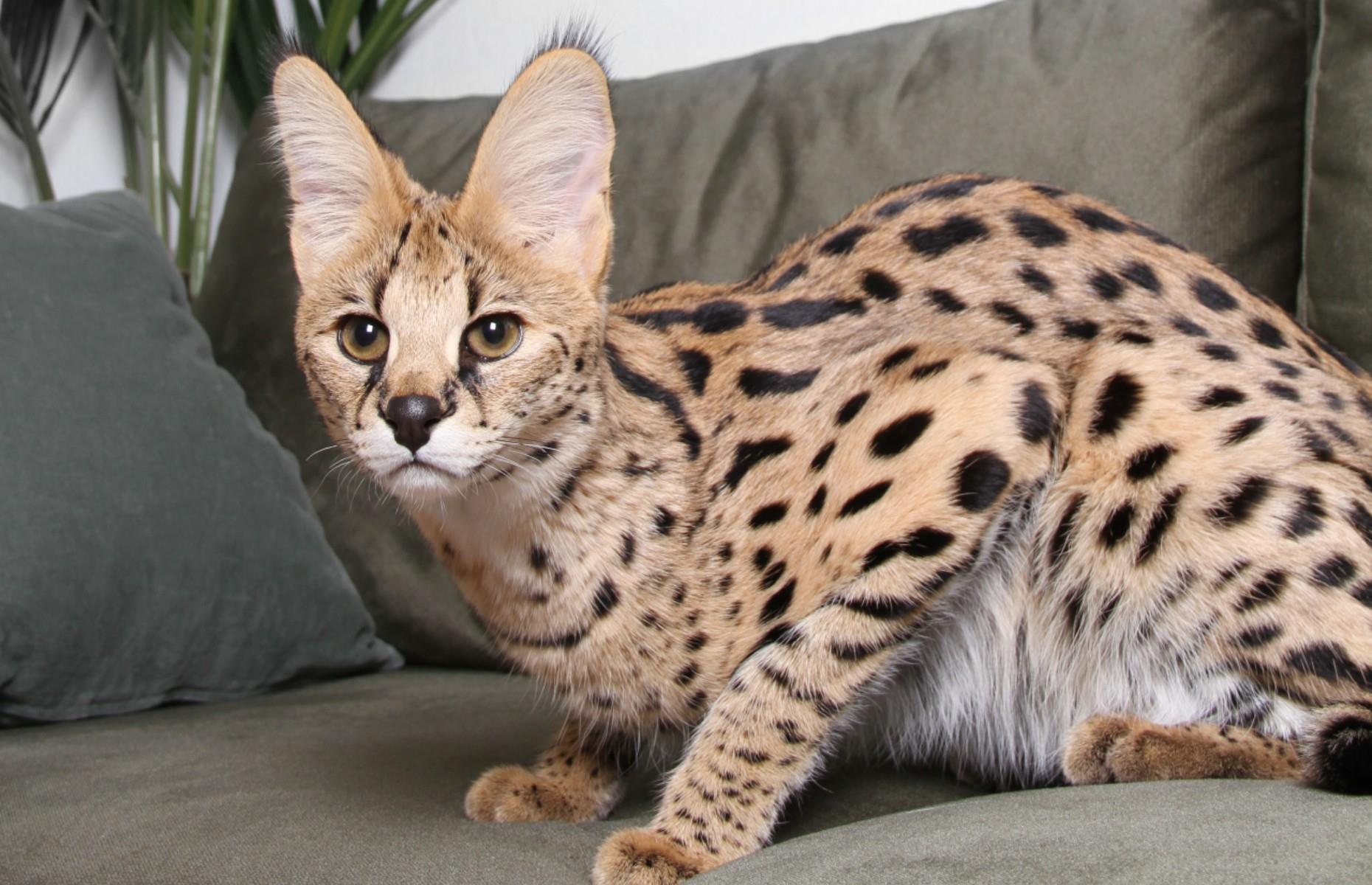When it comes to domestic cats, size matters! If you're a cat lover who's fascinated by the largest breeds, you're in for a treat. The world of feline giants is more captivating than you might think. From their impressive stature to their gentle demeanor, these big cats are truly remarkable. So, what is the largest breed of domestic house cat? Let's dive in and uncover the secrets of these majestic felines!
Picture this: a cat so large it could rival a small dog in size, yet still retaining that unmistakable feline charm. These giant kitties aren't just about size; they're also known for their affectionate nature and laid-back personalities. Whether you're looking for a furry companion to cuddle with or simply want to learn more about these gentle giants, this article has everything you need to know.
As we explore the largest domestic house cat breeds, you'll discover fascinating facts, care tips, and insights into what makes these breeds so special. So grab your favorite snack, get comfy, and let's embark on a journey into the world of the biggest cats you can welcome into your home!
- Cnn Anchor Quits On Air The Shocking Moment That Left Everyone Speechless
- Singer Train The Ultimate Guide To Revolutionizing Music Talent Development
Before we dive deeper, here's a quick table of contents to help you navigate through this article:
- What is the Largest Breed of Domestic House Cat?
- The Siberian Cat: A Forest Giant
- The Maine Coon: The Gentle Giant
- Norwegian Forest Cat: A Mythical Beauty
- Ragdoll Cats: Softies with a Heart of Gold
- Savannah Cats: A Wild Touch
- Comparing the Largest Breeds
- Care Tips for Big Cats
- Health Considerations for Large Breeds
- Lifestyle Tips for Living with Large Cats
- Conclusion: Which Giant Cat is Right for You?
What is the Largest Breed of Domestic House Cat?
Let's start with the big question: what is the largest breed of domestic house cat? The answer isn't as straightforward as you might think. There are several contenders for this title, each with its own unique characteristics. Among the top contenders are the Maine Coon, Siberian Cat, Norwegian Forest Cat, Ragdoll, and Savannah Cat. Each of these breeds boasts impressive size, but they also bring different personalities and traits to the table.
Size isn't just about length or height; it's also about weight and overall presence. These cats aren't just big—they're big in personality too. Whether you're looking for a playful companion or a calm, affectionate friend, one of these large breeds is sure to fit the bill.
- Olivia Dunham Fringe Actress The Fascinating Journey Of A Scifi Icon
- Keri Russell Biography A Deep Dive Into The Life Of An Iconic Actress
Now, let's take a closer look at each of these giants and what makes them stand out in the world of domestic cats.
The Siberian Cat: A Forest Giant
The Siberian Cat is often considered one of the largest domestic cat breeds. Originating from Russia, these cats are built to withstand harsh climates, which contributes to their robust size. Adult male Siberian Cats can weigh between 15 to 20 pounds, with females slightly smaller. Their thick, triple-layered coat adds to their imposing presence, making them look even larger than they are.
Key Characteristics of Siberian Cats
- Size: Males 15-20 lbs, Females 10-15 lbs
- Coat: Thick, water-repellent triple coat
- Personality: Playful, affectionate, and intelligent
- Lifespan: 11-15 years
These cats are not only big but also incredibly agile. Despite their size, they can leap great distances and are known for their playful nature. If you're looking for a cat that's both a cuddle buddy and a playmate, the Siberian Cat might be perfect for you.
The Maine Coon: The Gentle Giant
No discussion of large domestic cats is complete without mentioning the Maine Coon. Often referred to as the "gentle giant" of the cat world, the Maine Coon is one of the largest domestic cat breeds. Males can weigh up to 18 pounds, with some exceptional individuals tipping the scales at over 20 pounds. Their long, flowing coats and tufted ears give them a regal appearance.
What Makes the Maine Coon Special?
- Size: Males 13-18 lbs, Females 8-12 lbs
- Coat: Long, silky, water-resistant
- Personality: Gentle, friendly, and sociable
- Lifespan: 12-15 years
Maine Coons are known for their friendly demeanor and adaptability. They get along well with children, other pets, and even strangers. If you're looking for a cat that's as much a family member as it is a pet, the Maine Coon is an excellent choice.
Norwegian Forest Cat: A Mythical Beauty
The Norwegian Forest Cat, or "Norsk Skogkatt," is another contender for the title of largest domestic cat breed. With their striking appearance and majestic presence, these cats are often compared to mythical creatures. Adult males typically weigh between 13 to 22 pounds, with females being slightly smaller.
Why Choose a Norwegian Forest Cat?
- Size: Males 13-22 lbs, Females 7-12 lbs
- Coat: Long, dense, and weather-resistant
- Personality: Independent, affectionate, and curious
- Lifespan: 14-16 years
These cats are known for their independence and adaptability. They enjoy outdoor adventures but are equally content lounging indoors with their human companions. Their dense coat makes them well-suited for colder climates, but they can thrive in various environments.
Ragdoll Cats: Softies with a Heart of Gold
The Ragdoll Cat is another large breed that deserves a mention. Known for their tendency to go limp when picked up (hence the name), these cats are as gentle as they come. Adult males can weigh up to 15 pounds, with females being slightly lighter. Their semi-longhair coat and striking blue eyes make them stand out in the feline world.
Unique Traits of Ragdoll Cats
- Size: Males 12-20 lbs, Females 10-15 lbs
- Coat: Semi-longhair, soft, and silky
- Personality: Docile, affectionate, and people-oriented
- Lifespan: 12-15 years
Ragdolls are the ultimate lap cats. They thrive on human interaction and love nothing more than to be close to their owners. If you're looking for a cat that will follow you around the house and curl up on your lap at every opportunity, the Ragdoll is the perfect choice.
Savannah Cats: A Wild Touch
If you're looking for something a little more exotic, the Savannah Cat might be the right fit for you. These cats are a hybrid between domestic cats and servals, a wild African species. As a result, they are one of the largest domestic cat breeds, with some individuals weighing over 25 pounds.
What Sets Savannah Cats Apart?
- Size: Males 12-25 lbs, Females 8-18 lbs
- Coat: Short, spotted, and wild-looking
- Personality: Active, intelligent, and adventurous
- Lifespan: 12-20 years
Savannah Cats are known for their high energy levels and intelligence. They require plenty of mental and physical stimulation to thrive. If you're up for the challenge, a Savannah Cat can be a rewarding and exciting companion.
Comparing the Largest Breeds
Now that we've explored some of the largest domestic cat breeds, let's compare them side by side. Each breed has its own strengths and weaknesses, so choosing the right one depends on your lifestyle and preferences.
Comparison Table
| Breed | Size | Coat | Personality | Lifespan |
|---|---|---|---|---|
| Siberian Cat | 15-20 lbs | Thick, triple-layered | Playful, affectionate | 11-15 years |
| Maine Coon | 13-18 lbs | Long, silky | Gentle, friendly | 12-15 years |
| Norwegian Forest Cat | 13-22 lbs | Long, dense | Independent, affectionate | 14-16 years |
| Ragdoll Cat | 12-20 lbs | Semi-longhair | Docile, affectionate | 12-15 years |
| Savannah Cat | 12-25 lbs | Short, spotted | Active, intelligent | 12-20 years |
Care Tips for Big Cats
Big cats require special care to ensure they stay healthy and happy. Here are some tips to help you provide the best care for your large feline friend:
Feeding and Nutrition
Large cats have different nutritional needs compared to smaller breeds. Make sure to feed them a high-quality diet that meets their energy requirements. Consult with your veterinarian to determine the best food for your cat's size and activity level.
Exercise and Play
Even the biggest cats need exercise to stay fit and healthy. Provide them with plenty of toys and interactive playtime to keep them entertained and active.
Grooming
Many large cat breeds have long coats that require regular grooming. Brushing your cat's fur not only keeps it looking great but also helps prevent matting and reduces shedding.
Health Considerations for Large Breeds
Large cats can be prone to certain health issues, so it's important to stay informed about potential concerns:
Common Health Issues
- Hypertrophic Cardiomyopathy (HCM): A heart condition common in large breeds
- Joint Problems: Due to their size, large cats can experience joint issues
- Dental Health: Regular dental care is essential to prevent dental disease
Regular vet check-ups and a healthy lifestyle can help mitigate these risks. Always keep an eye out for any changes in your cat's behavior or health and consult your vet if you have concerns.
Lifestyle Tips for Living with Large Cats
Living with a large cat can be a rewarding experience, but it does require some adjustments to your lifestyle:
Space and Environment
Large cats need plenty of space to move around. Make sure your home is cat-proofed and provide them with scratching posts, climbing trees, and other enrichment items.
Training and Socialization
Training your large cat can be easier than you think. Use positive reinforcement techniques to teach them basic commands and good behavior. Socializing them with other pets and people from a young age can also help
- Lou Ferrignos Son The Untold Story Of A Legacy In Progress
- Joe Rogan Standing Next To People The Untold Story Of Connection And Influence


